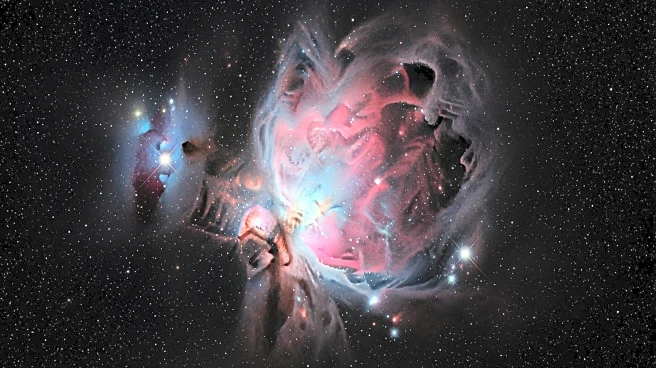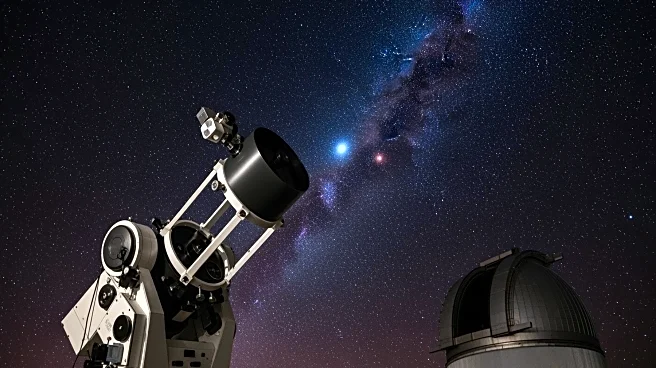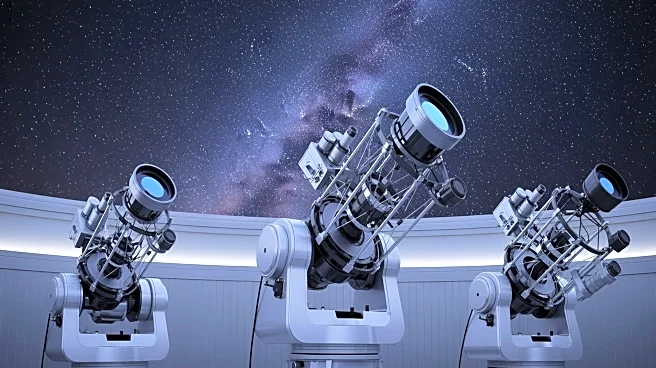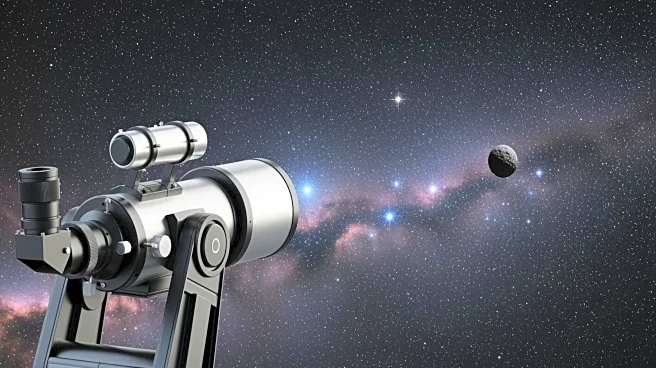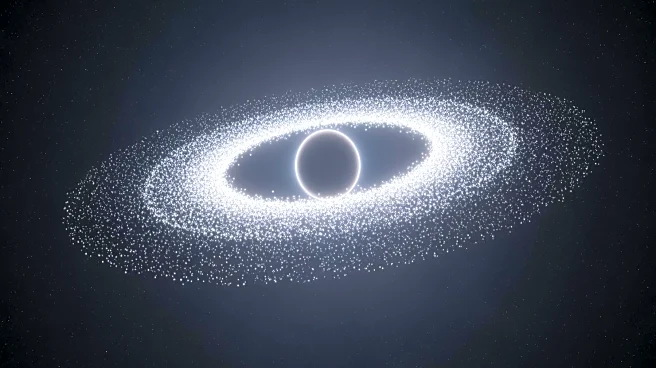What's Happening?
A team of astronomers led by UCLA has captured the sharpest view of the star beta Canis Minoris using a single telescope equipped with a photonic lantern. This breakthrough device divides starlight into
multiple fine channels, capturing subtle spatial patterns that are then combined using advanced computational techniques to produce high-resolution images. Traditionally, astronomers have relied on linking multiple telescopes to achieve such clarity, but this new method allows for unprecedented detail from a single telescope. The photonic lantern, developed by the University of Sydney and the University of Central Florida, is part of the FIRST-PL instrument installed on the Subaru Telescope in Hawai'i. This innovative approach enables the exploration of smaller, fainter, and more distant celestial objects, potentially transforming astronomical research.
Why It's Important?
The development of the photonic lantern represents a significant advancement in astronomical imaging technology. By enabling single telescopes to achieve high-resolution images, this method could reduce the need for large telescope arrays, making detailed cosmic observations more accessible and cost-effective. This technology opens new possibilities for studying the universe, allowing scientists to explore previously hidden structures and phenomena. The ability to observe smaller and more distant objects with greater clarity could lead to new discoveries and insights into the cosmos, potentially solving long-standing mysteries and uncovering new ones. The collaboration across international institutions highlights the importance of interdisciplinary efforts in advancing scientific knowledge.
What's Next?
The successful use of the photonic lantern in capturing detailed images of beta Canis Minoris sets the stage for further exploration of other celestial objects. Researchers may apply this technology to study planets, stars, and other cosmic phenomena with unprecedented precision. The findings from this study, including the unexpected asymmetry in the star's surrounding disk, will require further investigation and modeling by astrophysicists. As the technology is refined, it could become a standard tool in astronomical research, enabling new kinds of measurements and observations. Continued collaboration among international scientific institutions will be crucial in advancing this technology and exploring its full potential.
Beyond the Headlines
The use of photonic technologies in astronomy not only enhances imaging capabilities but also demonstrates the potential for interdisciplinary innovation. The integration of photonics with precision engineering and adaptive optics showcases how different scientific fields can converge to achieve groundbreaking results. This approach may inspire similar advancements in other areas of research, encouraging scientists to explore novel methods and technologies. The ability to capture detailed images of distant stars and their structures could also have implications for understanding the formation and evolution of celestial bodies, contributing to broader knowledge of the universe.



